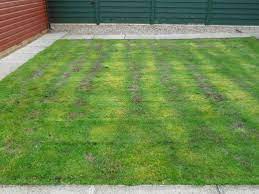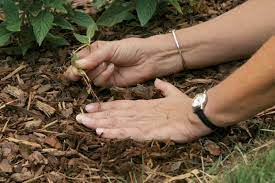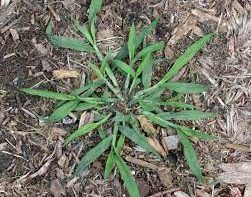When to Weed and Feed Lawns

Weed & Feed products combine fertilizer and a weed killer/preventer into one product. A single application can do double duty by treating random weeds across a lawn and feeding grass. Weed & Feeds are available in liquids or granules. Before you apply, there are some things that you should know about weed and feed products.
Feed and Weeding Start with Weeding
“Weed” is the “weed” portion of “weed and feed.” It contains a mix of herbicides that kill lawn weeds. Nearly all products include a post-emergent, but some contain a combination of a pre-emergent and a pre-emergent herbicide to stop new weeds from growing.
Post-Emergent herbicides kill lawn weeds such as Clover, Dandelion and Clover. You can find the complete list on your product’s labels. These post-emergents can be used as directed and will not harm existing grass. Advanced 5-in-1 Feed & Weed is an innovation that kills grassy weeds like Crabgrass. This eliminates the need to apply multiple herbicides in order to control them.
Pre-Emergent herbicides can be used to prevent new weeds from growing and germinating. The key is timing. Apply too soon, and the preventer may not work while the weeds remain dormant. Too late, and the seeds might already have germinated. Crabgrass preventers are best known for being applied in the early spring.
Ends with Feeding
The fertilizer half of “weed and feed” refers to fertilizer. Most fertilizers contain a mixture of nitrogen and other macronutrients and sometimes micronutrients in varying amounts. The most important element in lawn fertilizers is nitrogen (N). It comes in two forms: slow-release and fast-release. To provide fast green-up and sustainable growth, most lawn fertilizers contain a mixture of slow-release and fast-release forms.
Fast Release Nitrogen, also known as WSN or water-soluble nitrogen, is easily available and absorbed quickly by grass, leading to fast greening. It can also burn your lawn if used improperly.
Slow-Release nitrogen (often called WIN or water-insoluble nitrogen) is released slowly to the grass, providing more sustained and even growth. For example, it can take up to three months to release methylene-urea.
Know Your Lawn Type
Before you apply any type of fertilizer or weed & food product, it is important to identify the type of grass. While some fertilizers can be used on all types of lawns, most weed and feed products are labelled specifically for specific types of grasses. If you apply the wrong product to the wrong grass, you can harm your lawn. Be careful and carefully read the label. If you are still uncertain, dial the toll-free phone number on the label to contact the manufacturer.
How to Apply
Weed & Feed products work best when weeds have stopped and are not actively growing, e.g. spring and autumn.
Spring, Wait to apply until your lawn has been mowed twice before you apply to make sure that it is awake.
Check with your local Cooperative Extension System office to find out historical frost dates for your area. Many Feed and Weed labels will recommend applying based on this date.
Many weed and feed products have temperature restrictions. Make sure you read the label. Avoid applying to water-saturated soils or lawns that are prone to injury, drought, disease, or otherwise vulnerable to injury.
How to Apply
Use liquid weed and feed products only with the sprayer type recommended by the label. Follow the label instructions for spraying and mixing.
A rotary spreader or a drop-type spreader is best for granule weeds and feeds. Drop spreaders apply fertilizer in a narrow area directly below the spreader. A rotary spreader spreads fertilizer over a larger area. It is important to follow the application pattern. Follow label instructions.
Both spreaders can be adjusted for different application settings. The spreader type and model settings will determine how much fertilizer is used. To calibrate your spreader properly, read the manufacturer’s instructions. The specific fertilizer label will show you the correct setting for your spreader type. You can call the toll-free number to find out if there isn’t. Make sure the spreader is properly set before you use it. Learn more about how to calibrate your spreader and adjust the spreader settings. Always read and follow the label instructions.
Additional Things You Need to Know
Mowing – To get the best results, mow your lawn at least two days before applying. The lawn should have clippings from the three previous mowings. These clippings should not be used as mulch or compost around ornamentals, flowers, trees, or vegetable gardens.
Do not Rake Heavy raking can disturb the weed prevention barrier and decrease the product’s effectiveness.
Watering – Most weed and feed products recommend that you wait at least 24 hours before watering in. Always refer to the label.
Feeding new Lawns – Most lawns can be fertilized within 6-8 weeks of planting. This can depend on how the soil was prepared before planting, and the fertilizer used. Consult your local Cooperative Extension System office for advice on fertilizing new lawns.




Leave a Reply